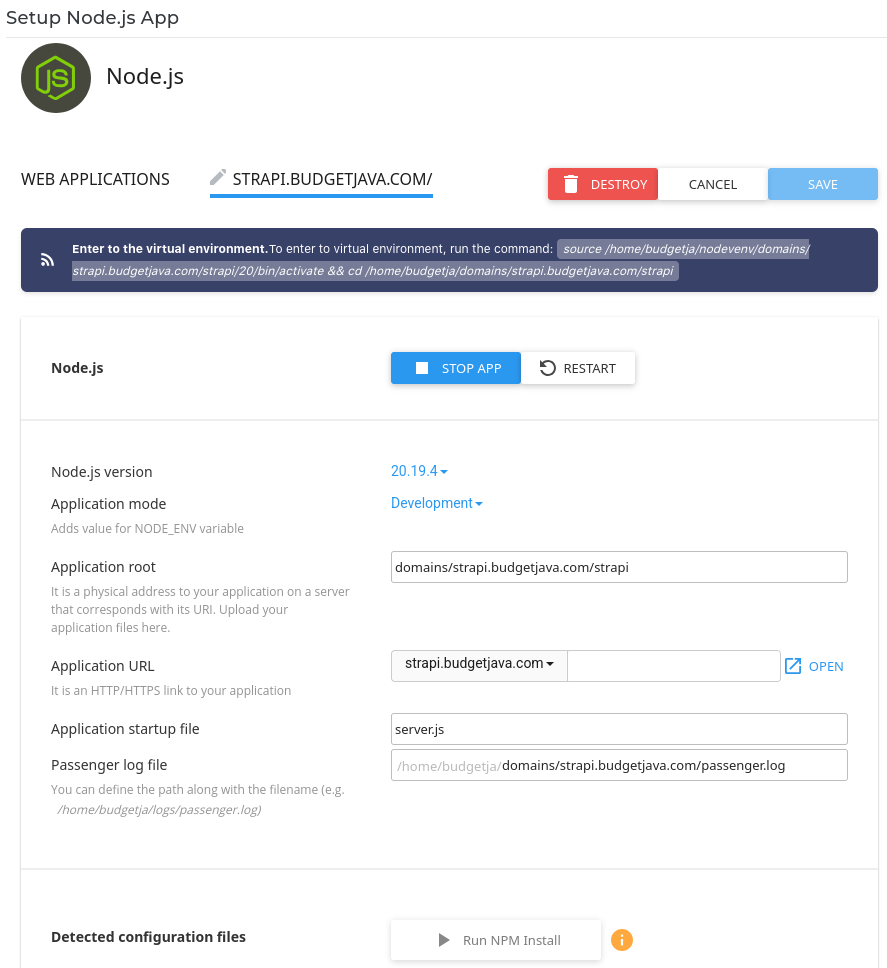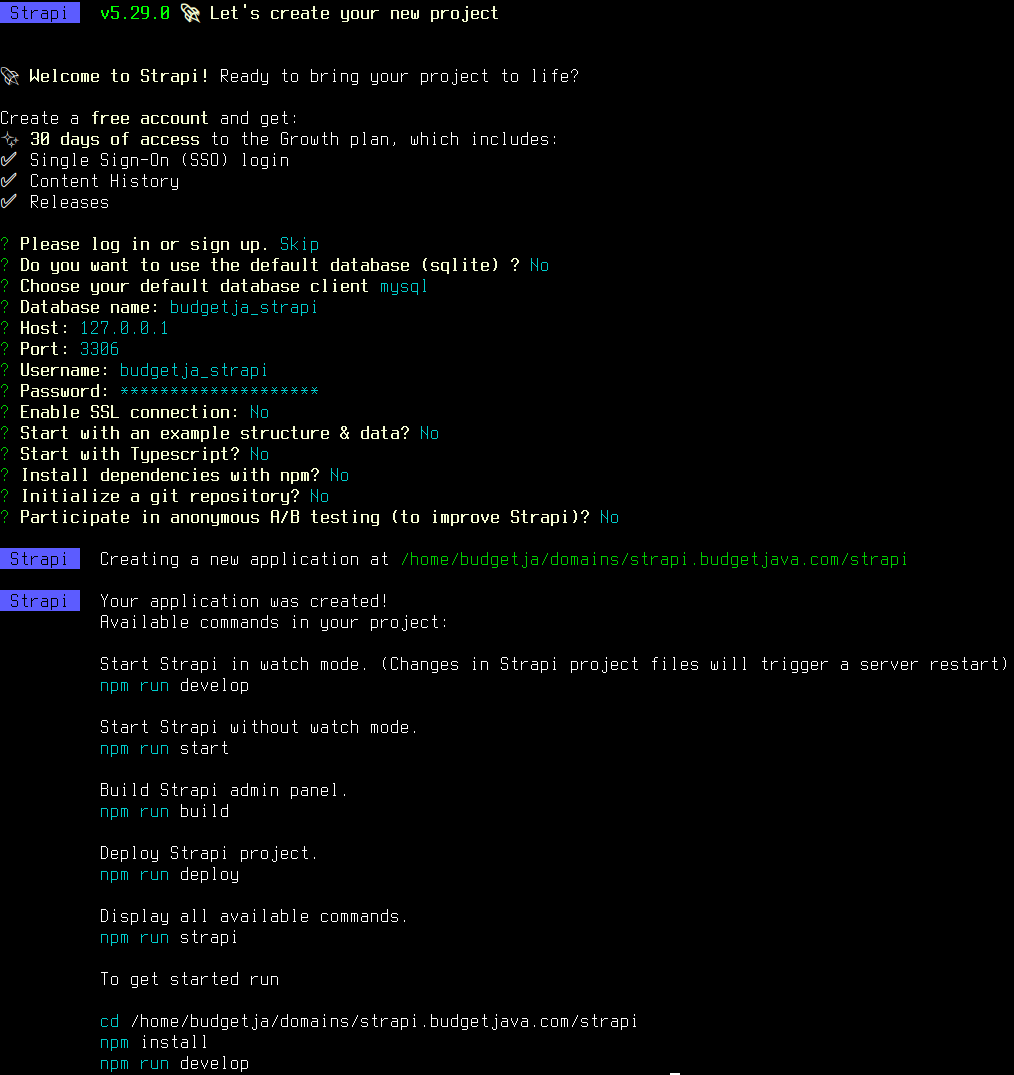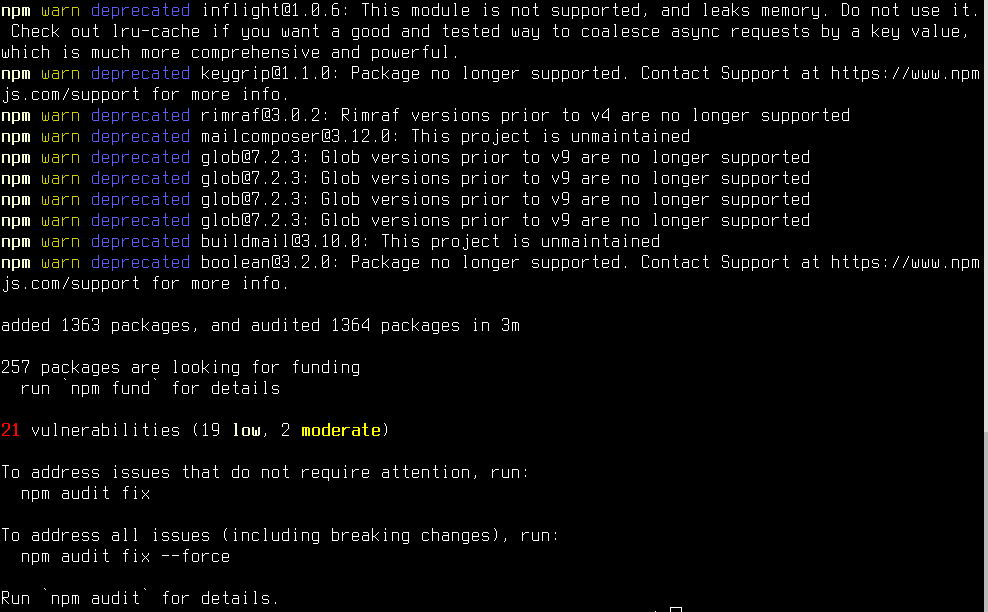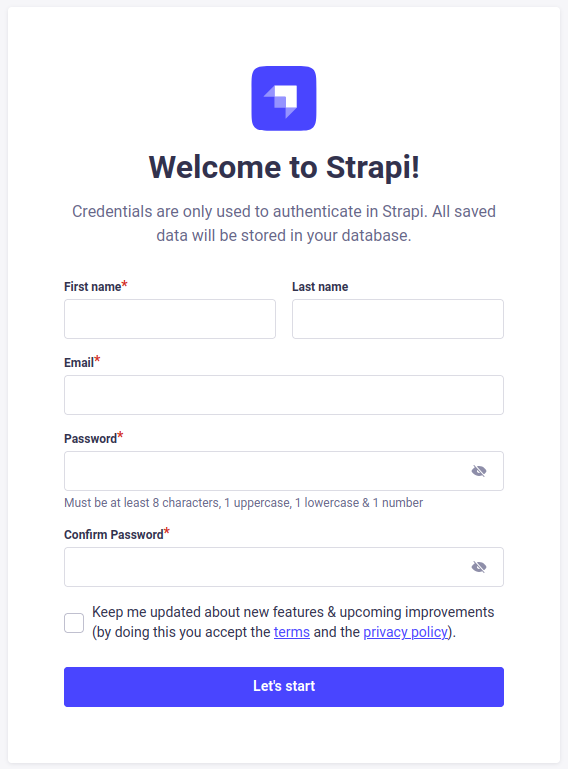Deploying Strapi v5 on CloudLinux Shared Hosting Using Node.js Selector (Passenger)
We present a Strapi v5 deployment using CloudLinux Node.js Selector, which is available on DirectAdmin-, cPanel-, and Plesk-based shared hosting servers.
Node.js Selector uses Phusion Passenger to start Node.js and proxy the requests. In this guide, we will set up Strapi v5 with Node.js 20 and npm 10 at the root URL of a subdomain: strapi.budgetjava.com.
1. Create a Subdomain
Create a subdomain in the control panel (DirectAdmin in this example). Ensure SSL is issued for the subdomain (or a wildcard certificate) if using https:// URLs.
2. Create a Database
Create a MySQL database with a database user. We will use it instead of the default SQLite. Another option is PostgreSQL.
3. Configure the Node.js App
In DirectAdmin → Setup Node.js App, create a new application:
| Setting | Value |
|---|---|
| Node.js Version | 20 or 22 |
| Application Mode | Development (for now) |
| Application Root | domains/strapi.budgetjava.com/strapi |
| Application URL | (leave empty) |
| Application Startup File | server.js |
| Passenger Log File | domains/strapi.budgetjava.com/passenger.log |
The above will create:
~/domains/strapi.budgetjava.com/public_html/.htaccesswith Passenger directives, and:
~/domains/strapi.budgetjava.com/strapi/with the app skeleton.

4. Finalize the Setup via SSH/Terminal
Enter the virtual environment and create the app:
source /home/budgetja/nodevenv/domains/strapi.budgetjava.com/strapi/20/bin/activate && cd /home/budgetja/domains/strapi.budgetjava.com/strapi
rm -rf ~/domains/strapi.budgetjava.com/strapi/* # the `npx` command requires an empty directory to work
npx create-strapi@latest .You can interactively choose Strapi bootstrap settings. There are a few non-default selections:
- Choose MySQL database
- Defer npm dependencies installation
- Disable TypeScript
- Skip Git repo
You can empty the strapi folder and rerun npx on the next attempt if needed.
Why answer No to “Install dependencies with npm?” Because it would fail — we must first remove the existing node_modules.

Now remove existing (empty) node_modules and install dependencies:

Correct node_modules will be created and will point to:
~/nodevenv/domains/strapi.budgetjava.com/strapi/20/lib/node_modulesnode_modules will then be populated. The last command builds the admin panel.

Finally, create the startup script:
cat > server.js <<'JS'
const strapi = require('@strapi/strapi');
strapi.createStrapi(/* {...} */).start();
JSYou can now Start or Restart the app in DirectAdmin and access http://strapi.budgetjava.com/
The first access will start Node.js and the database will be populated. You can find the related output in:
~/domains/strapi.budgetjava.com/passenger.logAdmin onboarding URL will become http://strapi.budgetjava.com/admin/auth/register-admin

Notes
- Choosing SQLite on AlmaLinux 8 will try to build
better-sqlite3, and it will fail with GCC < 10 + GLIBC < 2.29.
